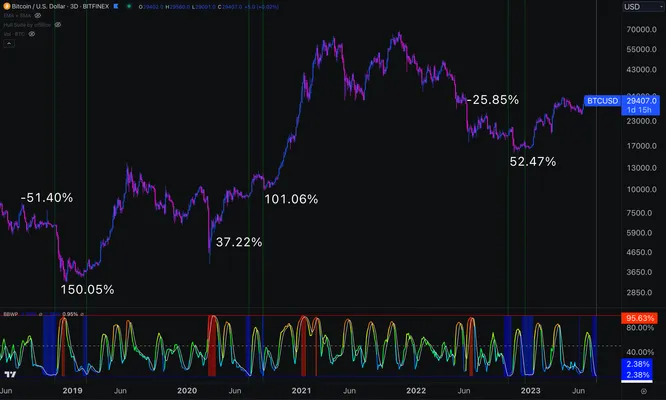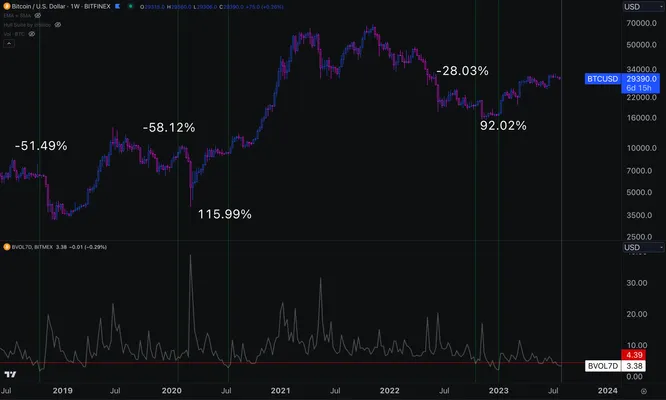Although BTC is up 80% YTD, the overall crypto market seems rather dull. Don’t get me wrong, there have been/are outliers, but they are just that, outliers. The general market is still rather uninspiring. That said, certain volatility metrics suggest that we are going to be blessed with a sizable move. The blessing might be a curse for some, depending on their positioning. Now, with pleasantries out of the way, let’s get to the heart of the matter!

We begin by plotting the Bollinger band width percentile (BBWP). For the uninitiated, it is a second-order derivative of the popular Bollinger Bands indicator. The first-order derivative, BBW, measures the gap between the upper and lower bands, whereas BBWP compares the gap with historical readings.
The indicator flashes red in the background when the BBWP hits a reading above the 95 percentile and flashes blue when it hits a reading below the 5 percentile. Currently, the BBWP sits at 2.38, a reading that has historically preceded a large move.
If we go over all instances where BBWP went below the 5 percentile since the infamous break of $6K support in 2018, we find that 4/6 moves were to the upside with an average of 85.2% (measured from signal given to the next high). The remaining moves were to the downside, with an average of -38.62% (measured from the signal given to the next low).
To add confluence, let’s consider a more commonly used metric of volatility called BVOL.

BVOL is calculated and provided by Bitmex. Similar to BBWP, most readings below 4.4 have translated to major moves. Three out of the last five moves have been towards the downside, with an average of -45.88%. The upside moves have an average of 104%.
Although these indicators are far from perfect, they do provide a solid framework and help set expectations. If history were to serve as our guide, we can pretty much expect BTC to either double or halve its current price. As difficult as these scenarios may be to contemplate now, it’s important to remember that the sentiment was remarkably similar during previous periods.